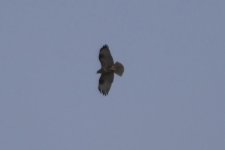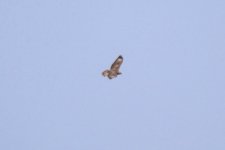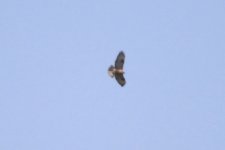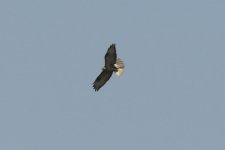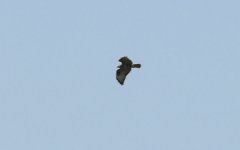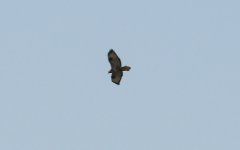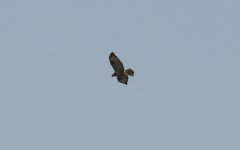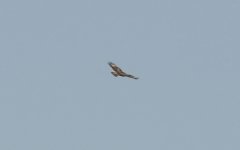No I appreciate that as I noted - I also ruled it out on the basis of being is too short-winged any way however the plumage is extremely similar.
I have not been to Bengal but have been several timed to Northern India - both Steppe and Himalayan can be very difficult to separate - as Jalid says, there are ‘multiple types’ of plumages in these species, there is also a lot of overlap. I have seen quite a few individuals on my travels in the past that simply defied being pinned down to race. It is even more difficult to identify these from photos at times. Structure is helpful in the field and of course where plumage is not effected by out of focus blur or processing artefact.
Adult Steppe Buzzard in some plumages show a very dark broad trailing edge to the wing (which looks weak and defuse in the OP) and dark carpel patches with a pale covert line on the underwing with a pale breast band - a dark rufous/fox type mix which is the plumage I was thinking of: (ignore the Short-toed Eagle labelled as a LLB!)
Download scientific diagram | Some birds recorded from the study site. A. Kestrel, B. Steppe Buzzard, C. Long-legged Buzzard, D. Eurasian Hoopoe. E. Black Bird, F. European Turtle Dove. from publication: Actions for Environmental Sustainability in Wadi Al-Zarqa Al-Ulwi | This project was...

www.researchgate.net
I am hard pressed here to separate a Himalayan from a Steppe on this plumage but adult Steppe in this similar plumage has a broad black trailing edge to the wing compared to your bird as Jalid pointed out. While I would probably have left it as a ‘buteo’ sp without that added insight, and although I don’t personally know ‘Jalid‘ it is very obvious to me from previous postings on BF, he is somewhat of a major expert in raptor identification, so if he thinks it is a Himalayan, and with the benefit of hindsight, it certainly points to that, then I am certainly not going to argue! 🙂
